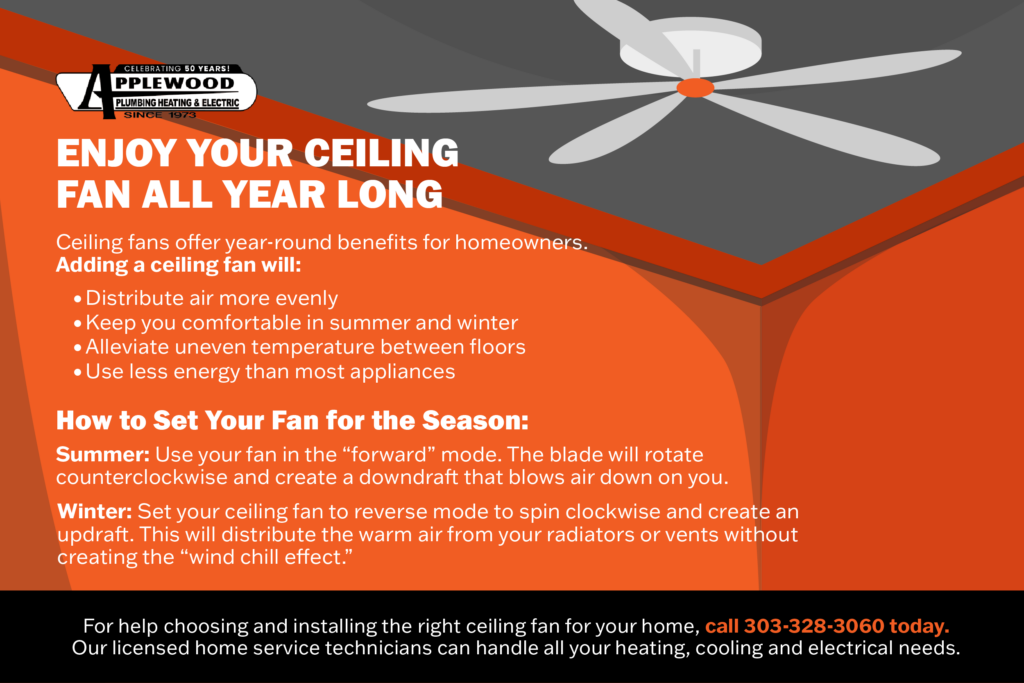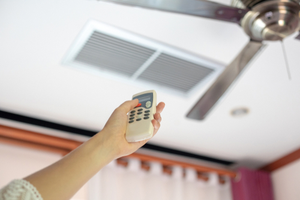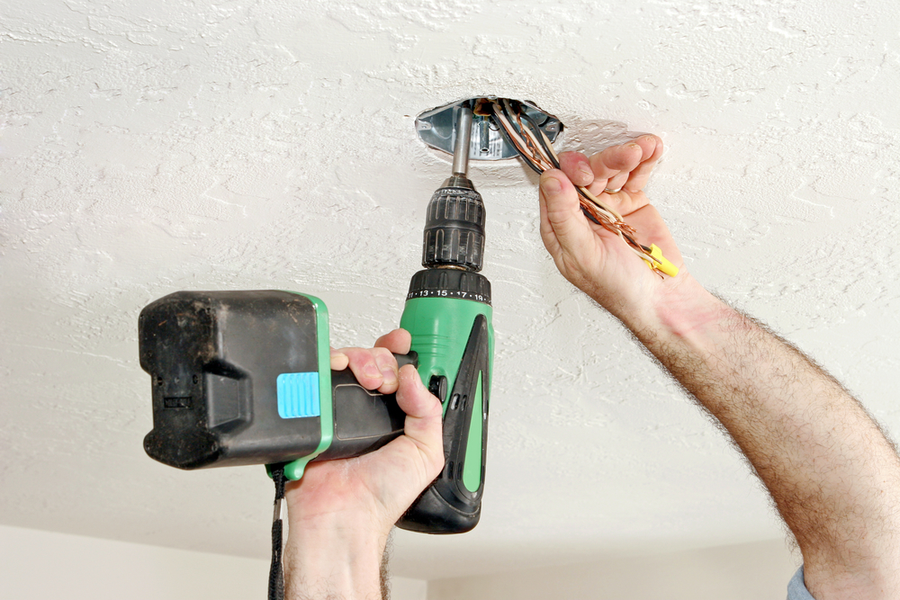October 11, 2024
How to Change Ceiling Fan Direction to Enjoy Your Fan All Year Long [Video]
Get the most out of your home ceiling fan by using it all year round. Ceiling fans help evenly distribute warm air in the winter and cold air in the summer. A ceiling fan is also one of the most energy efficient appliances you own.
By circulating the air in your home, fans help inexpensively regulate the temperature and save you money on energy costs. How do you get the most out of your ceiling fan? We’re here to show you, starting with our video on ceiling fan direction:

How to Change Ceiling Fan Direction
As outlined in the video above, all ceiling fans have a reverse switch. Instead of blowing air down on you, your fan can also pull air up toward the ceiling. Simply locate the switch on your fan or remote control and change the direction of your ceiling fan. Here’s how the settings work:
- Ceiling Fan Direction for Summer: Use your fan in the “forward” mode. The blade will rotate counterclockwise and create a downdraft that blows air down on you.
- Ceiling Fan Direction for Winter: Set your ceiling fan to reverse mode to spin clockwise and create an updraft. This will distribute the warm air from your radiators or vents without creating the “wind chill effect.”
While fans don’t actually change the air temperature, air currents blowing over your skin give you the sensation of feeling cooler. The “wind” draws heat energy away from your skin and the stronger the wind, the more heat it draws. Try reversing your fan next time your home feels cold to circulate air without the chill.
Stop Uneven Home Temperatures
If you have an older house, you know this scenario all too well: The first floor, near your thermostat, is nice and comfy. Upstairs it’s either too hot or too cold but most definitely not the same as below and not the temperature you dialed in.
Ceilings fans, strategically placed around your home, can lessen this phenomenon. They distribute the air more evenly across rooms and levels so that hot air from your furnace or cool air from your air conditioner are blended more efficiently. A kitchen ceiling fan can also help blow hot air from your stove or oven away from your workspace to keep you more comfortable as you prepare dinner.
How to Choose the Right Ceiling Fan

Fans come in every shape, size and color. If you have a low ceiling, a flush mount ceiling fan saves you valuable headroom. If you have a high ceiling, a fan with an extension pole can be positioned low enough to make a noticeable impact.
Most ceiling fan companies have sizing guides so that you can pick the right sized blade diameter for your room. They will also list the efficiency rating and cubic foot per minute (CFM) rating – which measures air flow and indicates how your fan will perform.
Before you install your ceiling fan, make sure you have a suitable location. All ceiling fans need to be mounted in a junction box. Also, ensure you have the proper wiring in place and that the box is positioned on a ceiling joist that can hold the weight of your fan.
Other considerations when choosing a ceiling fan are the number of blades and method of turning it on/off. More blades don’t equal more air flow, they’re simply an aesthetic choice. For power, your choices are a wall switch, a pull cord or a remote control. A licensed electrician can help you make the best choice for each room and install your fans so that they won’t disrupt lights or other existing appliances.
How to Clean a Ceiling Fan
Months or even years may go by before you realize you forgot to dust your ceiling fan. Meanwhile, your fan blades are slicing through the air, picking up dust, pollen, pet hair and whatever else is floating around. By the time you get around to cleaning it, it’s caked with debris.
Never fear, we’ve got a hack to make this chore easy and free of mess: Use a pillowcase to clean your ceiling fan. Make sure you use an old one that no one cares about. Simply slip the pillowcase over the fan blades one at a time, wrap it tight and pull it toward you while applying pressure against the fan blade’s surface. The pillowcase will pick up and contain all the dust. You may need to repeat a few times for neglected fans.

Ceiling Fan Repair and Installation in Colorado
Call or Contact Applewood today. One of our licensed electricians can diagnose existing fan problems or install a new fan to improve the air circulation in your home. We can also help identify heating or cooling issues within your home, improve system efficiency and help you feel more comfortable.


